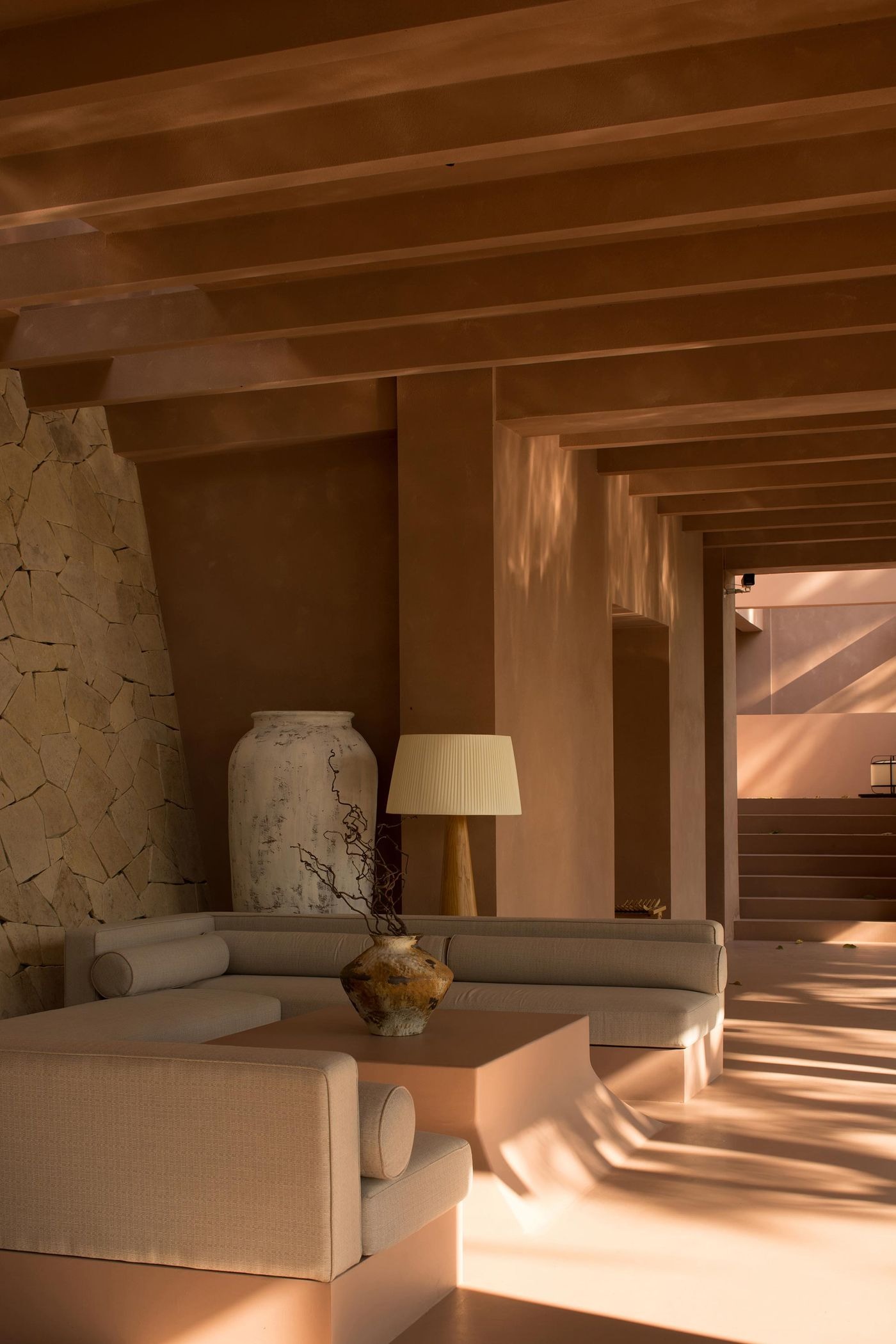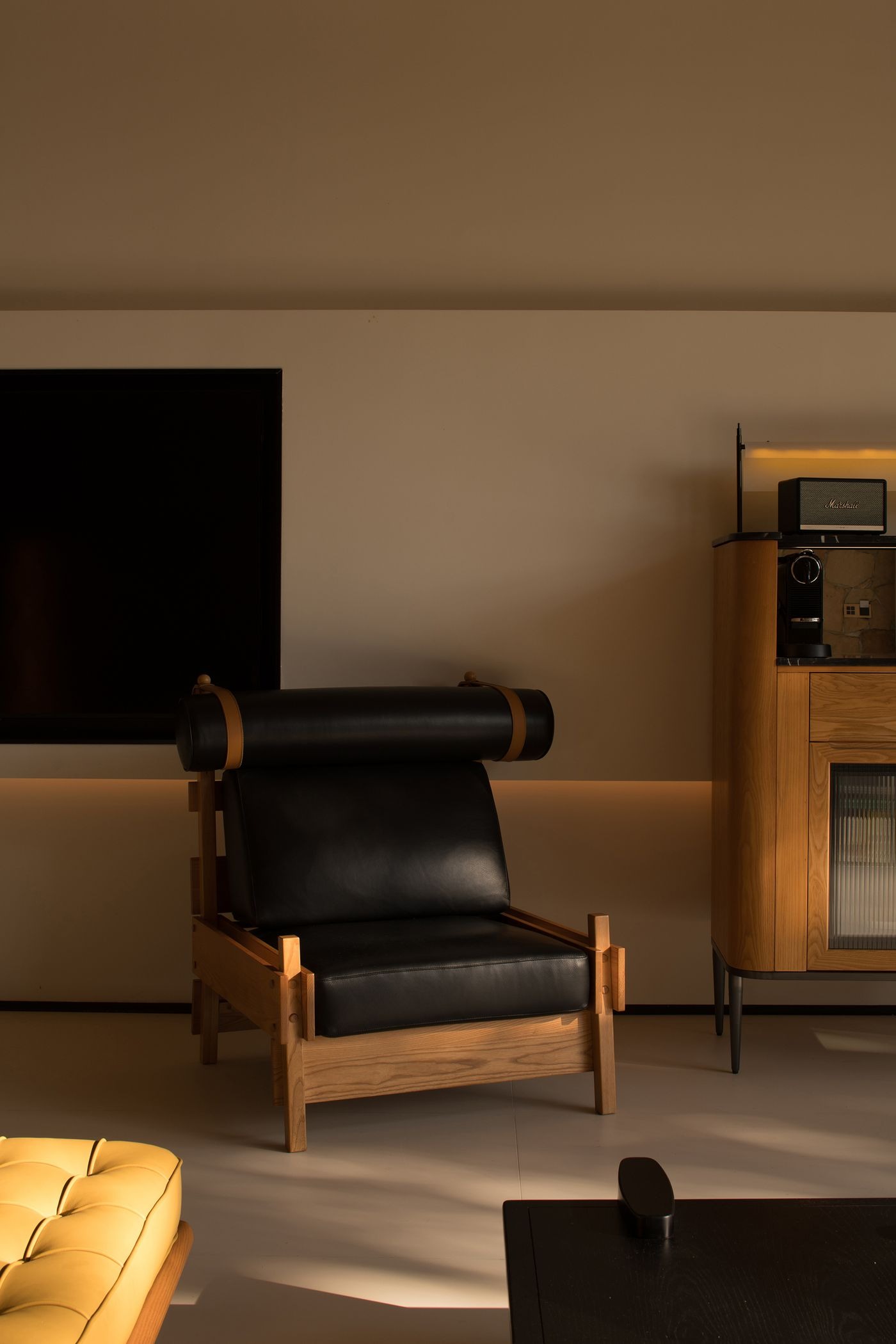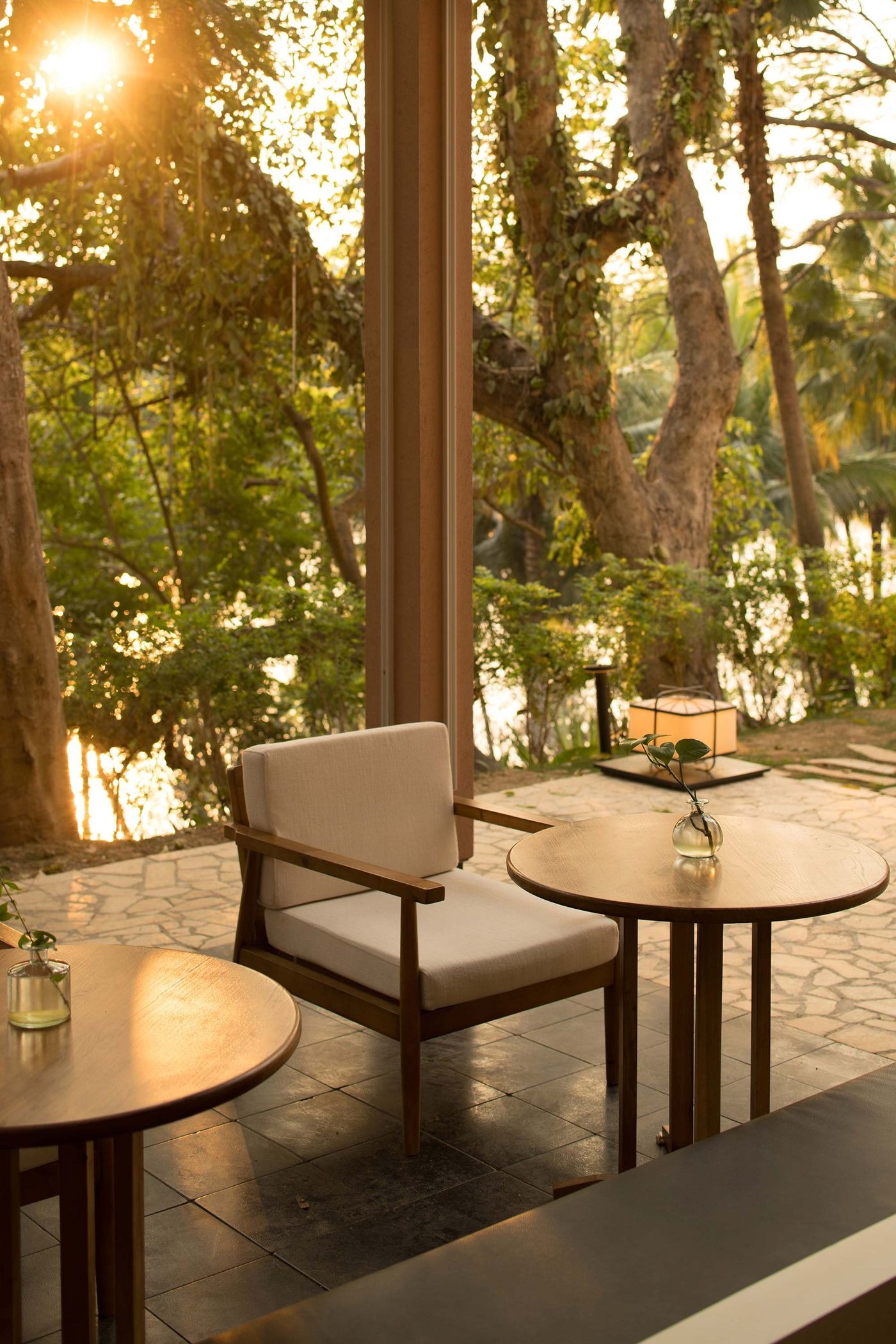"건축은 땅이 허락하는 만큼만 존재해야 한다. 자연은 우리의 스승이자 협력자다." - 안도 다다오

 |
 |
 |
중국 시솽반나 열대우림 속 ALAN 리조트에서 발견한 공생의 미학 Funs Creative Design Consultant-ALAN
An Intimate Retreat in China that Channels the Contemplative Power of Nature
중국 남부 윈난성 시솽반나의 열대우림이 드리운 언덕에 자리잡은 ALAN은 자연환경과 깊이 교감하는 섬세한 리조트다. Funs Creative Design Consultant가 설계한 이 부티크 호텔은 건축이 어떻게 풍경을 지배하지 않고 그 안에서 겸손하게 거주할 수 있는지를 보여주는 빼어난 사례다. 란창강 위로 신중하게 솟아오른 이 복합시설은 다공성과 개방성, 그리고 자연계와의 의도적 대화를 통해 새로운 건축적 가능성을 제시한다.
지형의 리듬을 따라 흐르는 건축
언덕의 자연스러운 윤곽을 따라 선형으로 배열된 리조트는 두 개의 3층 숙박동과 그 사이를 흘러내리는 공용 공간으로 구성된다. 이러한 배치는 복합시설을 지형에 단단히 뿌리내리게 할 뿐만 아니라 거의 모든 공간에서 막힘없는 전망을 확보한다. 한국의 전통 건축이 산세를 거슬러 올라가며 자연과 조화를 이루었던 것처럼, ALAN 역시 대지의 기울기와 방향을 존중하며 자신의 형태를 결정했다.
깔끔한 직선형 볼륨과 일관된 재료 구성이 특징인 이 건물은 모더니스트적 엄격함에도 불구하고 장소에 깊이 뿌리내린 듯 느껴진다. 이는 상당 부분 건물의 흙빛 분홍색 외관 덕분이다. 마치 토양에서 빌려와 햇빛으로 걸러낸 듯한 이 색조는 구조물이 열대우림의 변화하는 질감과 그림자 속으로 자연스럽게 스며들도록 한다.
물과 빛이 만드는 공간의 시
중앙 구역은 숙박동 사이의 연결고리 역할을 하며, 공간을 조용한 극적 효과로 나누는 긴 반영 연못 주위에 그늘진 야외 라운지가 배치되어 있다. 넉넉한 개구부와 그늘진 콜로네이드와 짝을 이룬 이 선형 수공간은 주변 미기후를 식힐 뿐만 아니라 실내외, 인공환경과 자연환경 사이의 경계를 부드럽게 흐린다.
위쪽으로는 수영장이 수관 바로 위에 떠 있는 듯 보이며, 무한대 가장자리가 시선을 강과 숲이 우거진 경사면 너머로 자연스럽게 이끌어간다. 이곳에서 물은 단순한 시설이 아닌 하늘과 숲을 담는 거대한 거울이 되어, 건축과 자연 사이의 대화를 중재한다.
걸음마다 펼쳐지는 풍경의 액자
동선은 중앙 볼륨 양쪽의 의례적 계단을 통해 섬세하게 조율되며, 리조트의 세 층을 우아하게 연결하면서 주변 풍경을 순차적으로 드러낸다. 각 층에서 바라보는 전망은 마치 서로 다른 화폭처럼 다양한 깊이와 구도를 보여준다.
복합시설 한쪽의 식당 파빌리온은 자연 요소에 완전히 열려 있어, 야외 생활의 지역적 전통을 현대적으로 해석하면서 자연광과 바람이 하루 종일 공간에 생기를 불어넣는다. 여기서 식사는 단순한 행위를 넘어 자연과 함께하는 시간적 경험이 된다.
프라이버시와 개방감의 절묘한 조율
하층부 객실은 전용 테라스와 플런지 풀을 갖춘 야외 공간으로 열려 있어 고요한 은둔감을 선사한다. 상층부 객실들은 친밀감보다는 웅장함을 택해, 나무 꼭대기 위에 떠 있으면서 강의 은빛 반짝임을 바라보는 넓은 발코니를 갖추고 있다. 각 공간은 거주자의 다양한 감정 상태와 시간대에 맞는 서로 다른 자연과의 만남을 제공한다.
재료가 들려주는 장소의 이야기
내부 공간은 미니멀리즘과 따뜻함 사이의 신중한 균형을 이룬다. 건식 돌벽과 목재 슬래트 천장은 토착 공예의 흔적을 간직하는 한편, 매끄러운 콘크리트 바닥과 바닥부터 천장까지의 유리창은 공간을 현재에 확고히 뿌리내린다.
절제되면서도 풍부한 질감의 재료 구성은 지역적 전통을 암시하면서도 단순한 모방을 거부하는 수공예 가구들로 완성된다. 여기서 디자인은 시각적 소음을 철저히 배제하며, 열대우림이 공간의 주인공으로서 마땅한 역할을 담당하도록 한다.
건축이 자연에게 배운 겸손
ALAN은 현대 건축이 자연과 맺을 수 있는 관계의 새로운 가능성을 제시한다. 건축가는 자연을 정복하거나 배제하는 대신, 그 안에서 겸손하게 거주하는 방법을 탐구했다. 이는 한국의 전통 건축이 추구했던 자연 순응의 철학과도 맥을 같이 한다.
결과적으로 이 리조트는 단순한 휴양시설을 넘어서 자연과 건축, 그리고 인간이 조화롭게 공존할 수 있는 공간적 실험의 성과물로 읽힌다. 급격한 도시화와 환경 파괴가 진행되는 현시점에서, ALAN이 보여주는 '자연 속 거주'의 방법론은 미래 건축이 나아가야 할 중요한 방향을 제시한다.
Write by Claude & Jean Browwn






























Tucked into the rainforest draped hills of Xishuangbanna in China’s southern Yunnan province, ALAN is an intimate resort soulfully attuned to its natural setting. Designed by Funs Creative Design Consultant, the boutique hotel offers a quietly striking example of how architecture can inhabit rather than interrupt the landscape. Rising discreetly above the Lancang River, the 3,500-square-metre complex favours porosity, openness, and a deliberate dialogue with the natural world.
Arranged in a linear formation that follows the natural contours of the hillside, the resort comprises two three-storey accommodation blocks with communal areas cascading between them across two levels. This configuration not only anchors the complex to its terrain but also opens up uninterrupted views from nearly every space.
Characterised by clean rectilinear forms and a consistent material palette, the complex feels deeply rooted in place despite its modernist rigor. This is due, in no small part, to the building’s earthen pink exterior, a hue that seems to have been borrowed from the soil and filtered through the sun. It’s a subtle camouflage that allows the structure to recede into the rainforest’s shifting textures and shadows, rather than stand starkly alone.
The spatial organisation of ALAN is as intuitive as it is serene. The central zone functions as a hinge between the accommodation wings, comprising a shaded outdoor lounge arranged around an elongated reflecting pool that bisects the space with a sense of quiet drama. This linear water feature, paired with generous openings and shaded colonnades, not only cools the ambient microclimate but blurs the boundaries between indoors and outdoors, the built and natural. Above, a swimming pool appears to hover just above the canopy, its infinity edge drawing the eye outward to the river and forested slopes beyond.
Circulation is orchestrated via ceremonial staircases on either side of the central volume, elegantly connecting the resort’s three tiers while framing axial views of the surrounding landscape. On one side of the complex, the dining pavilion opens to the elements, echoing the local tradition of outdoor living while allowing natural light and a breeze to animate the space throughout the day.
Guest rooms on the lower level open onto private patios with plunge pools, offering a sense of tranquil seclusion. Those on the upper levels trade intimacy for elevation, with expansive balconies that float above the treetops and gaze out towards the river’s silvery glint.
The interiors strike a careful balance between minimalism and warmth. Dry-stone walls and timber slat ceilings echo vernacular craft, while smooth concrete floors and floor-to-ceiling glazing root the spaces firmly in the present. It’s a restrained yet richly textured palette, softened by handcrafted furnishings that allude to regional traditions without tipping into pastiche territory. Here, the design resists visual clutter, allowing the rainforest to assume its rightful role as the primary spectacle.
from yatzer